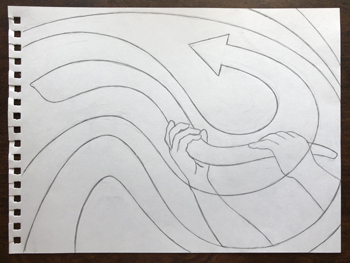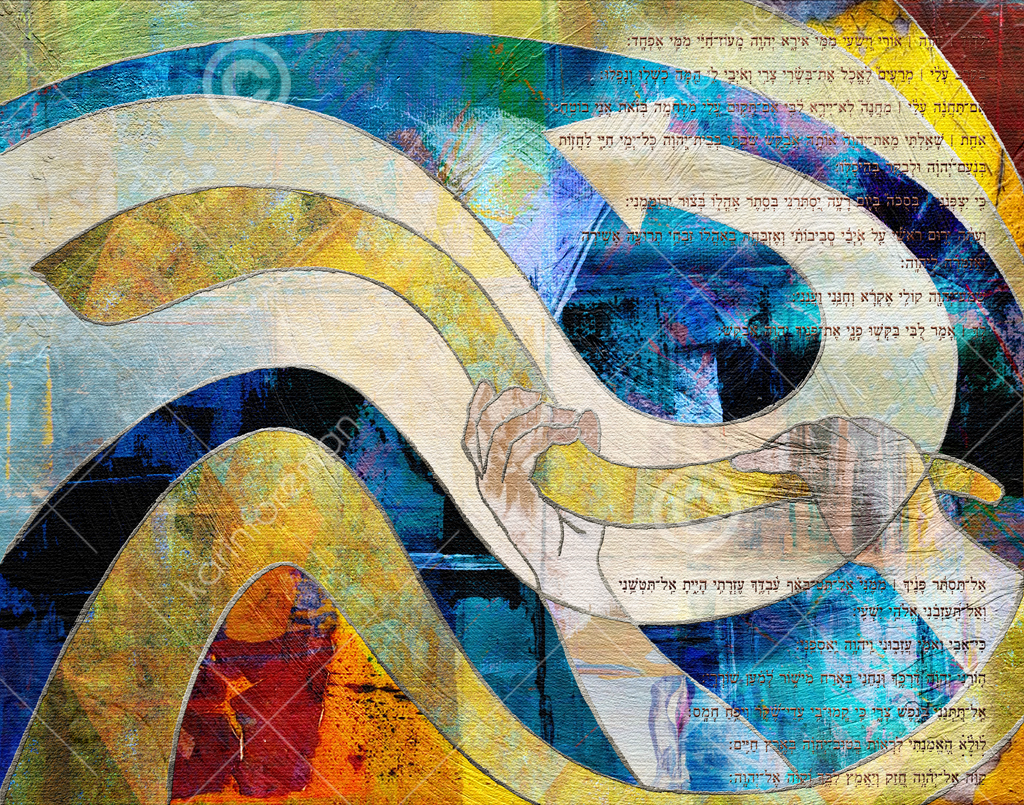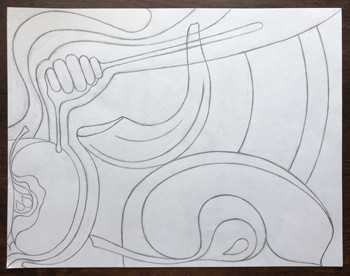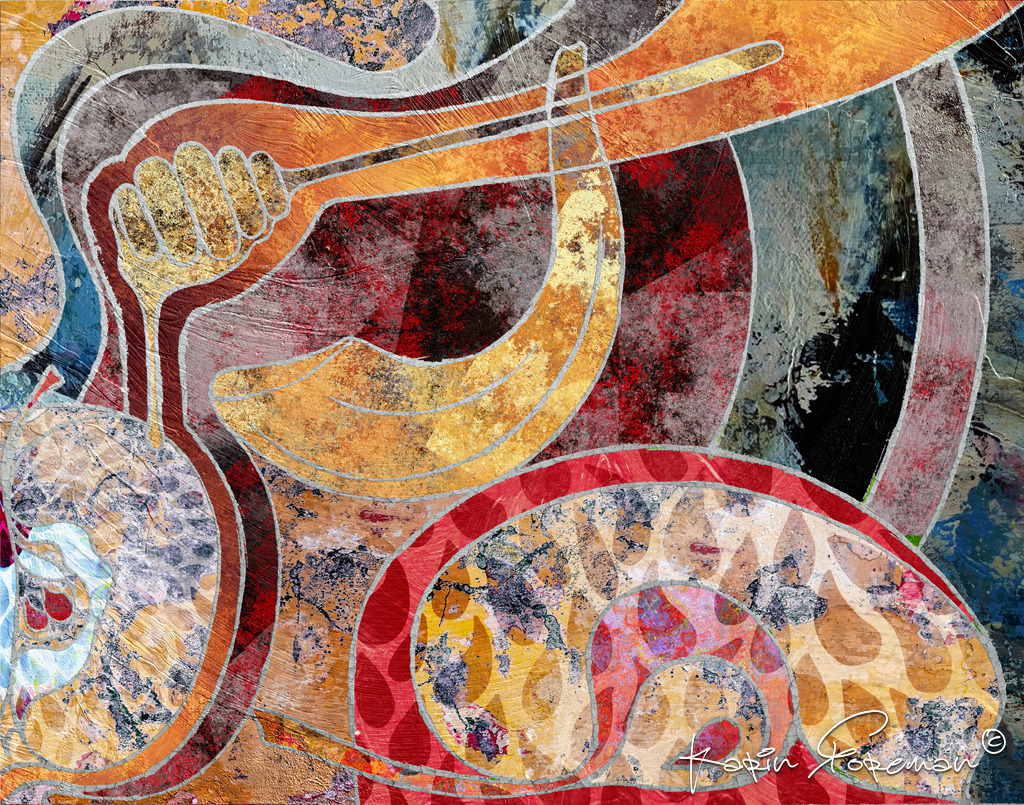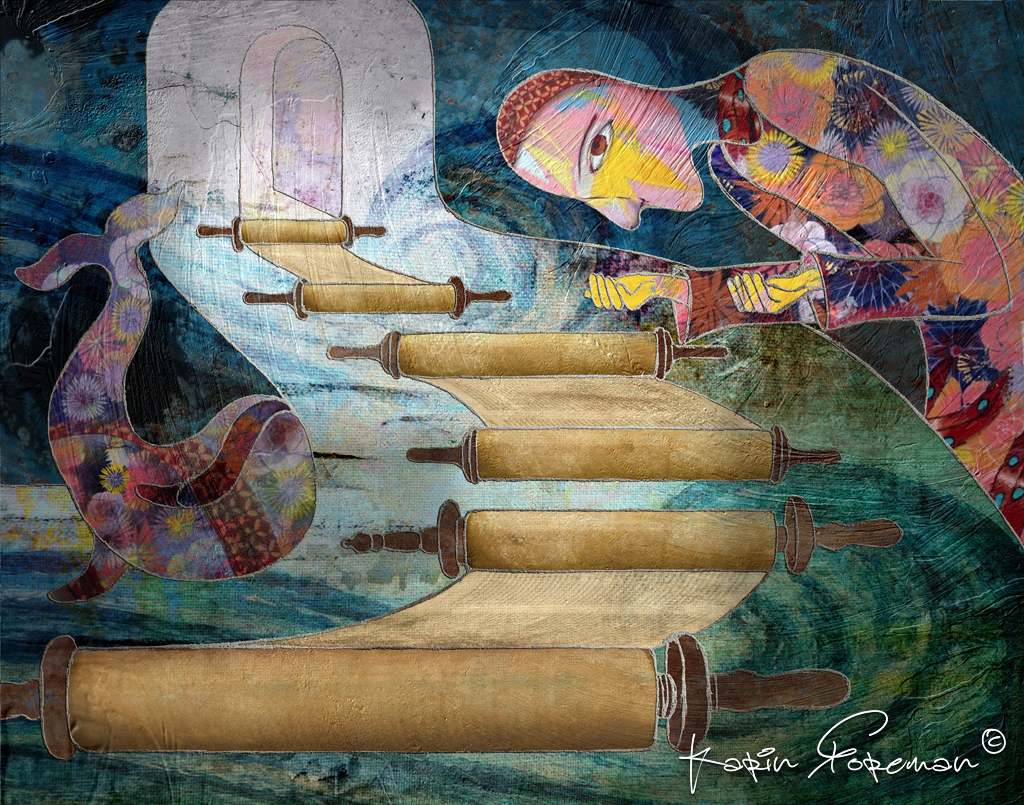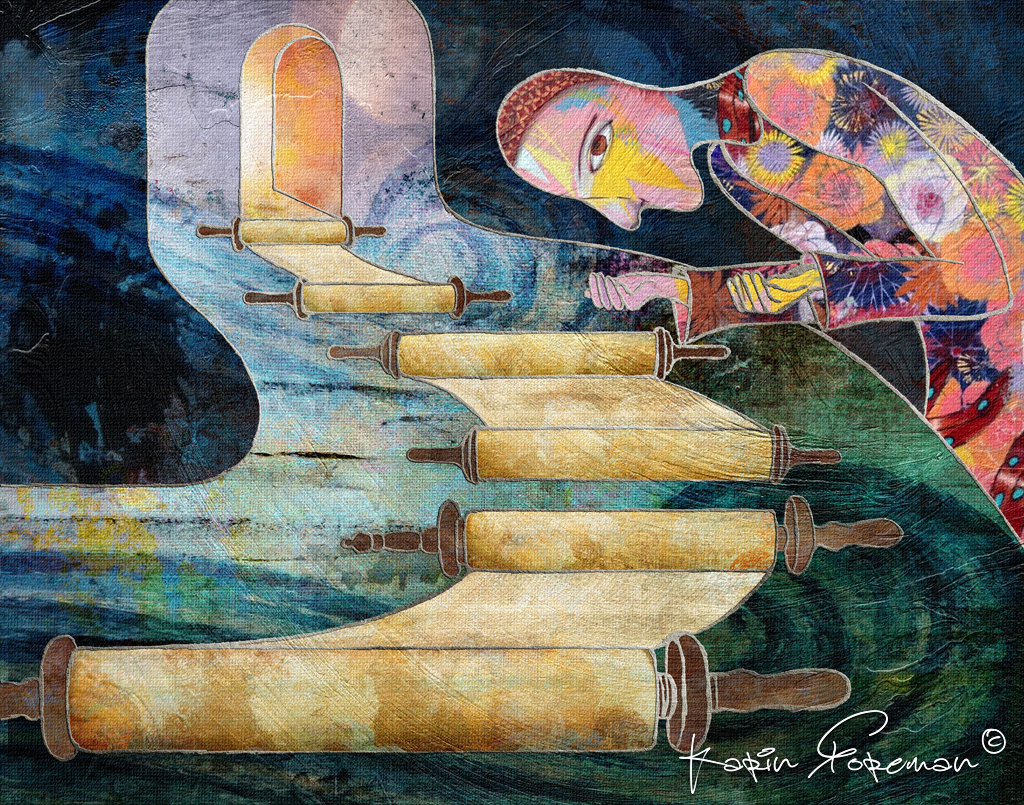May you and all your family share in a New Year filled with good health, continued success, and blessings always!
Rosh Hashanah 2018 will begin tonight. For me personally, this year it is not just another part in yet another cycle in the line of Jewish holidays. Like no other year before, I truly feel that tonight will mark a new and exciting future. There is a tangible sense of leaving the old and everything that happened behind, and stepping into a brand-new life-changing beginning—one that will bear fruit.
This journey started during Elul and is evident in my new abstract artwork. I am fond of abstract styles because the viewers can project their own interpretations.
The most important element that I wanted to portray in Elul is the aspect Teshuva. Teshuva literally means “return.” It is the continued process of realigning with G-d, community, and family. The outcome of this time of reflection should result in repentance and a complete turn. The arrow not only represents the repentance and a 180-degree turn from wrongdoing but also the exchange of granting and asking for forgiveness!
Elul features a shofar, which is customarily blown every morning (except on Shabbat) from Rosh Hodesh Elul (the first day of the month) until the day before Rosh HaShanah. Its blasts are meant to awaken one’s spirits and inspire a soul-searching.
The painting features Psalm 27, which is customarily read every day from Rosh Hodesh Elul through Hoshanah Rabbah on Sukkot (in Tishrei).
Rosh HaShanah רֹאשׁ הַשָּׁנָה features the traditional elements like apples dipped in honey for a sweet new year. Furthermore, there is a shofar to awake us from our spiritual slumber. It also includes seed/tear shapes. They symbolize “Weeping may endure for a night, But joy comes in the morning.” Psalm 30:5. The tears of sorrow will be transformed into tears of joy. They also look like seeds and signify the beginning of new life and fruitfulness.
Yom Kippur with Whale (Book of Jonah)
Yom Kippur יוֹם כִּפּוּר features aspects of the 40 days of honest soul searching, self-examination and a desire to right the wrongs. The blue background symbolizes the Sea from the book of Jonah, that is traditionally read on Yom Kippur. It signifies that no one is beyond redemption. It also has an element of the closing of the gates, which is the final service of Yom Kippur (Neilah).
